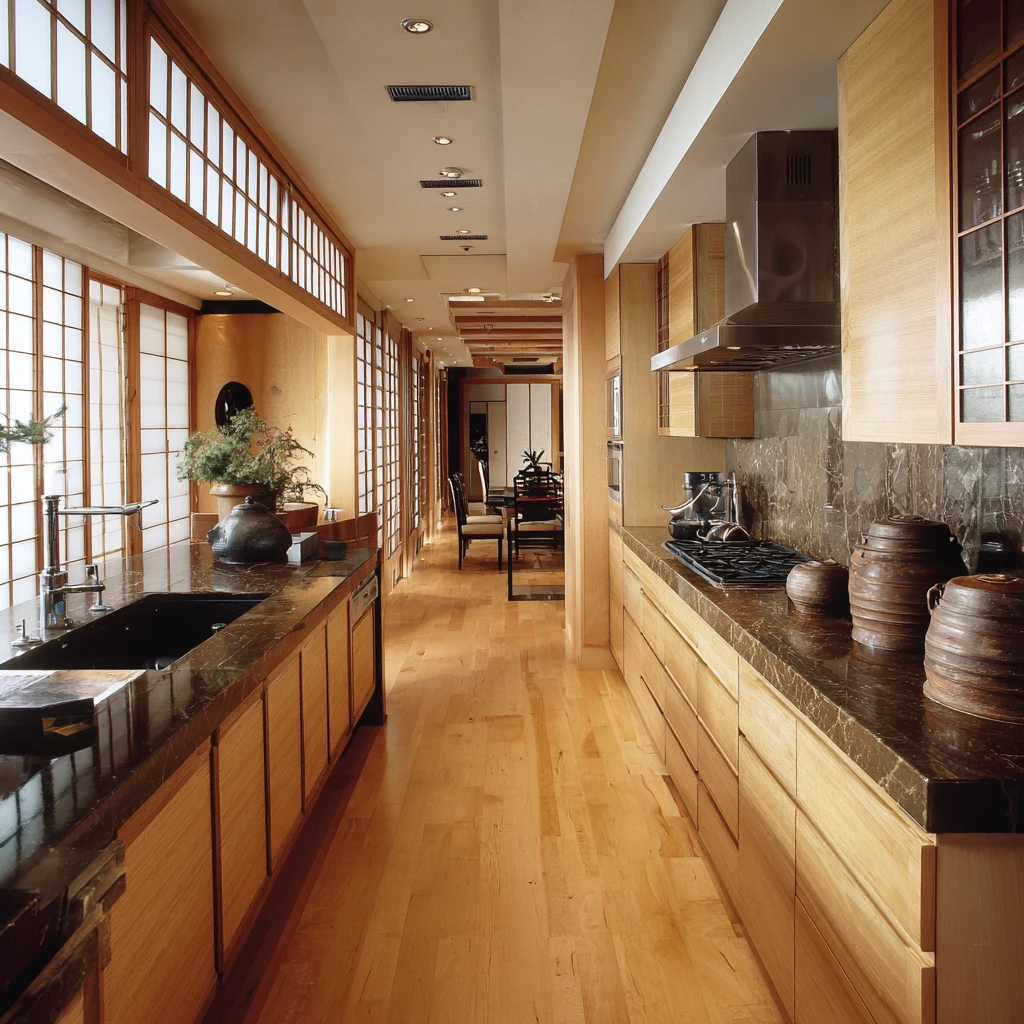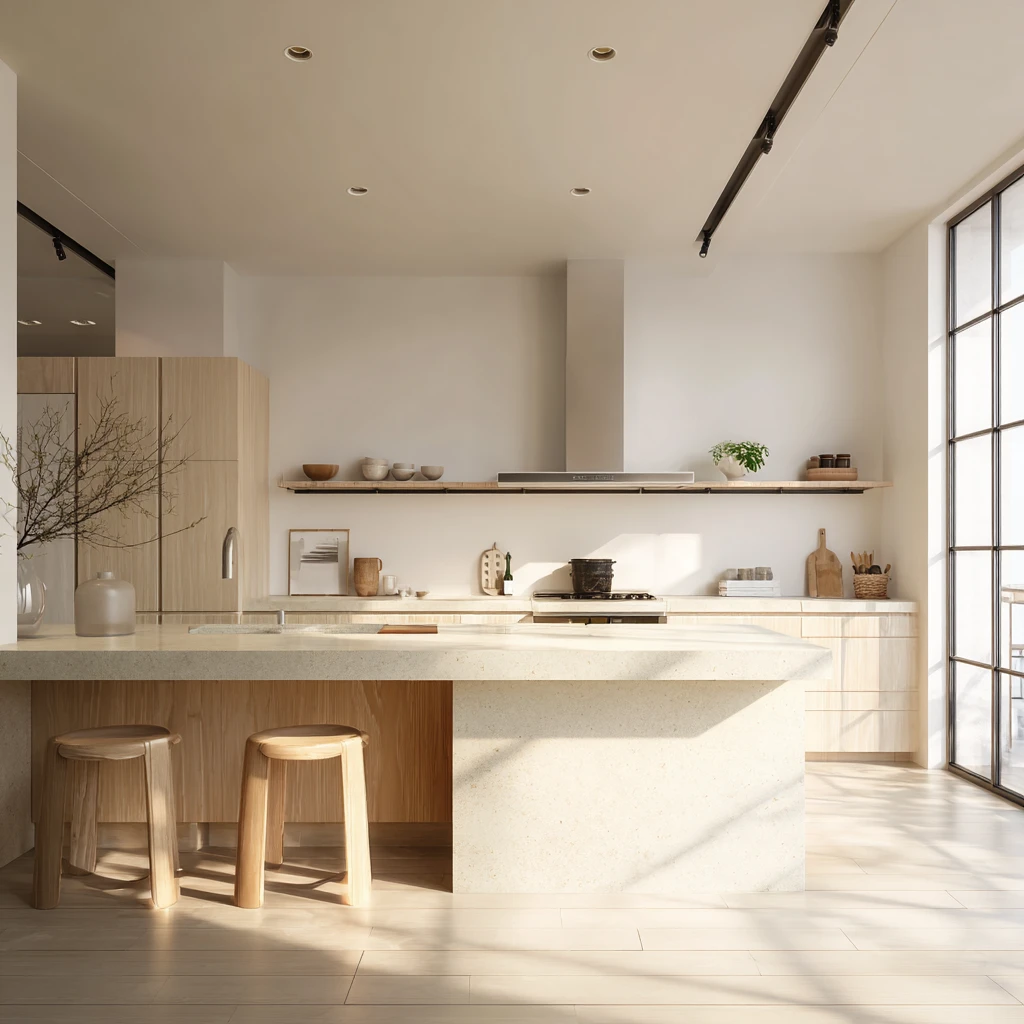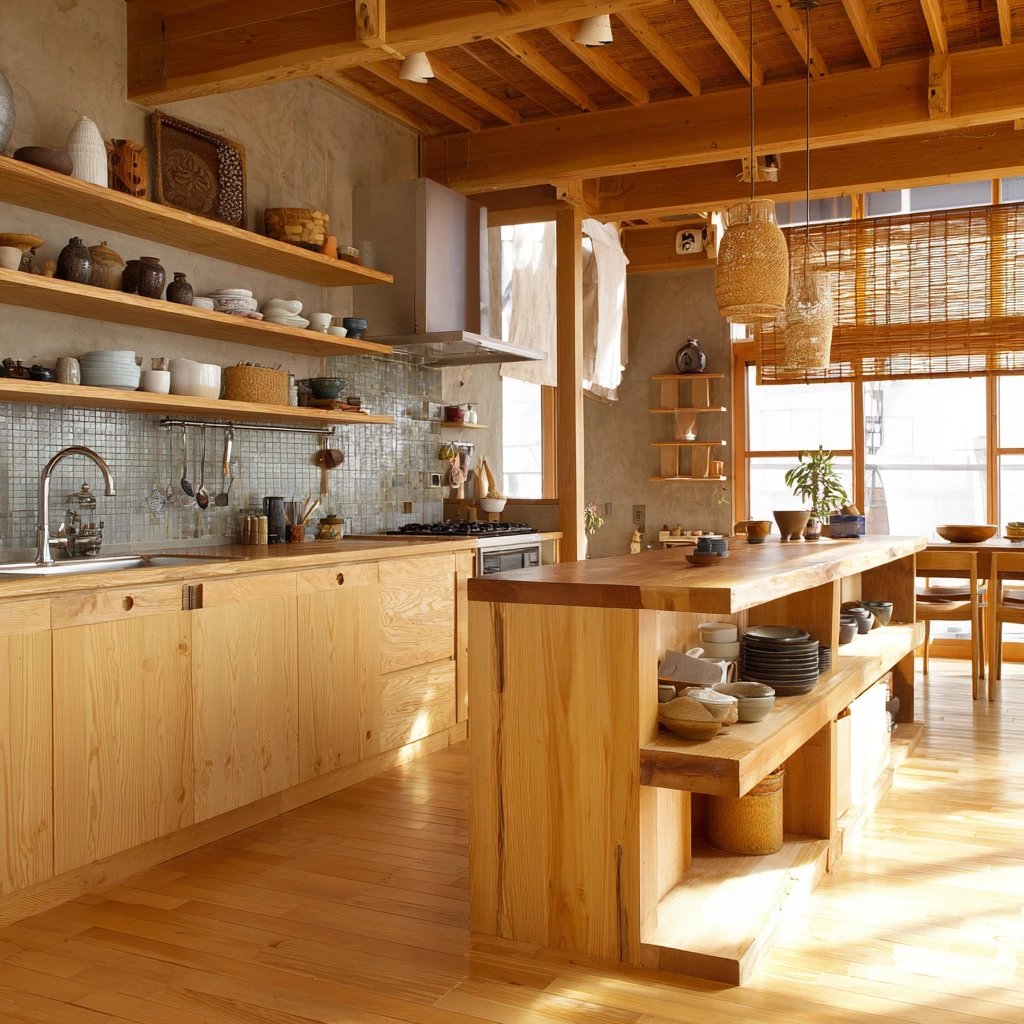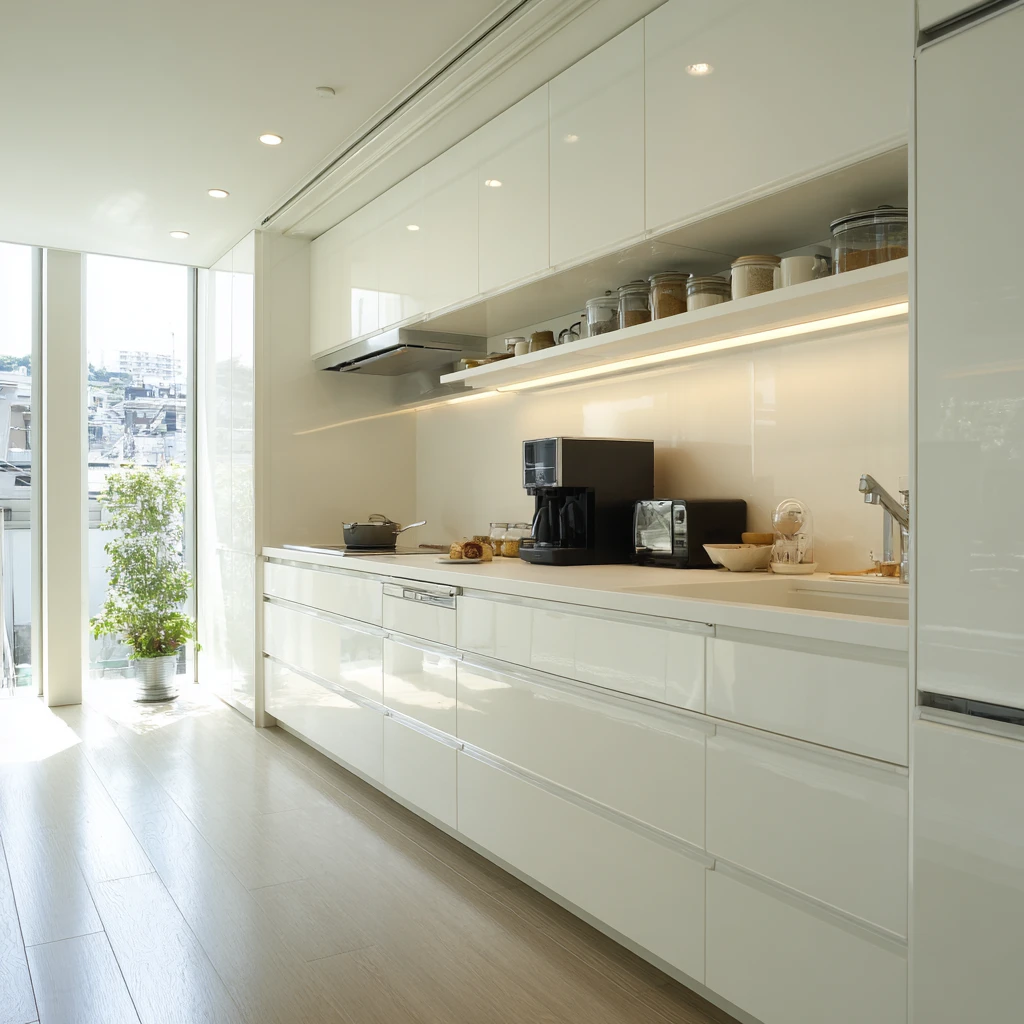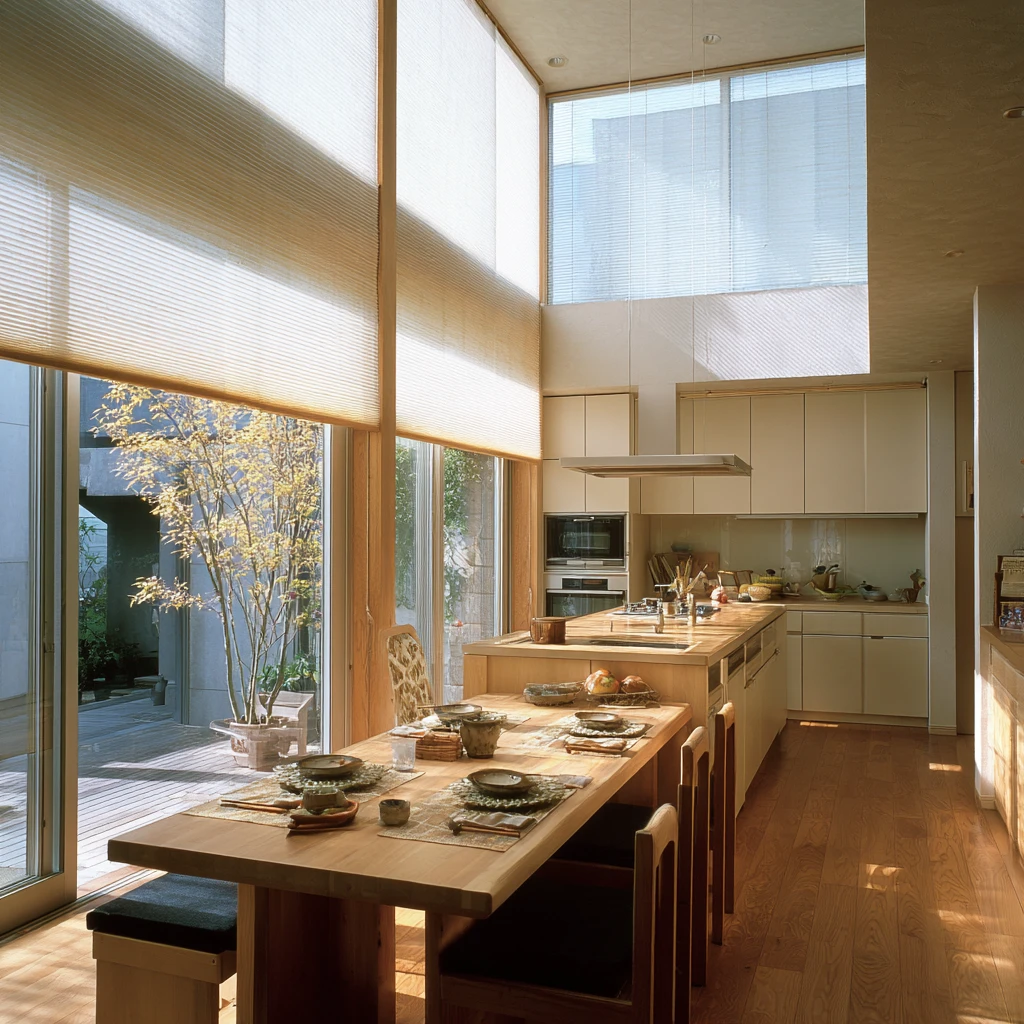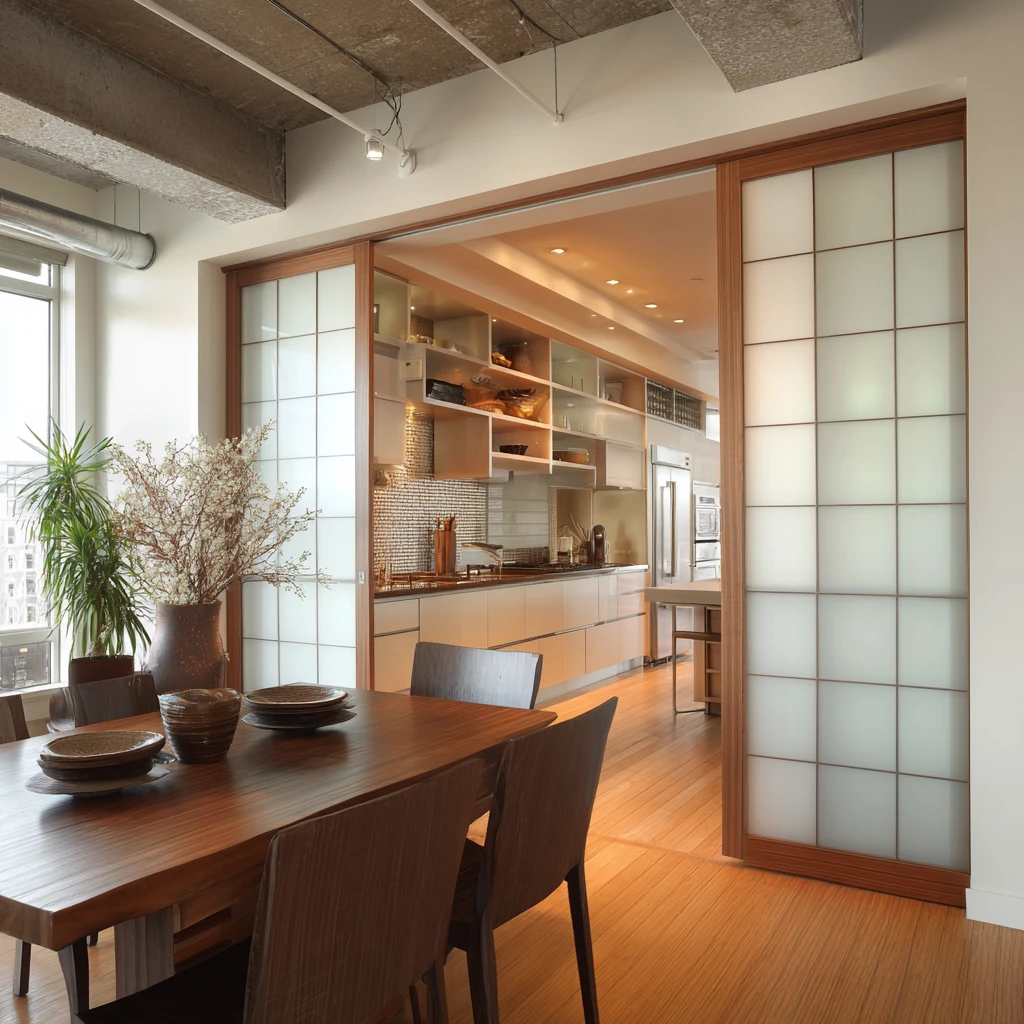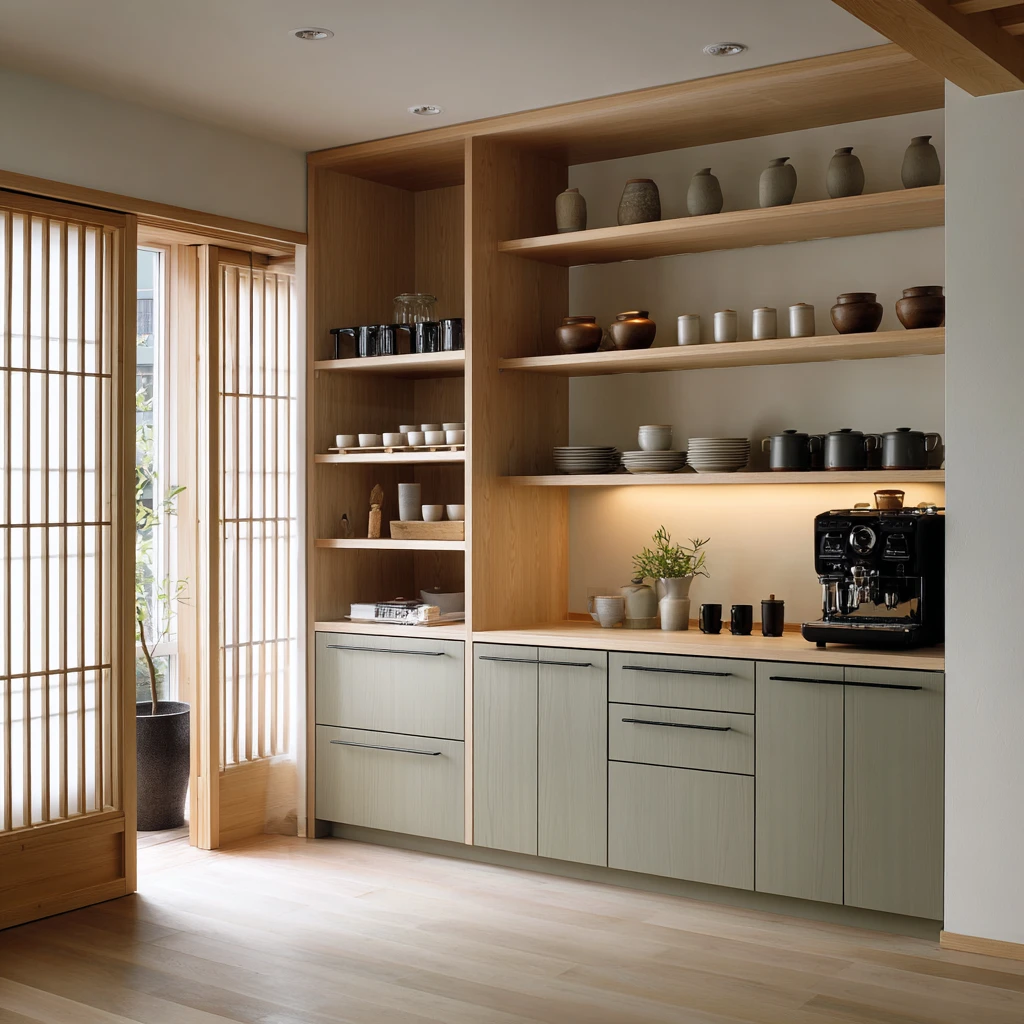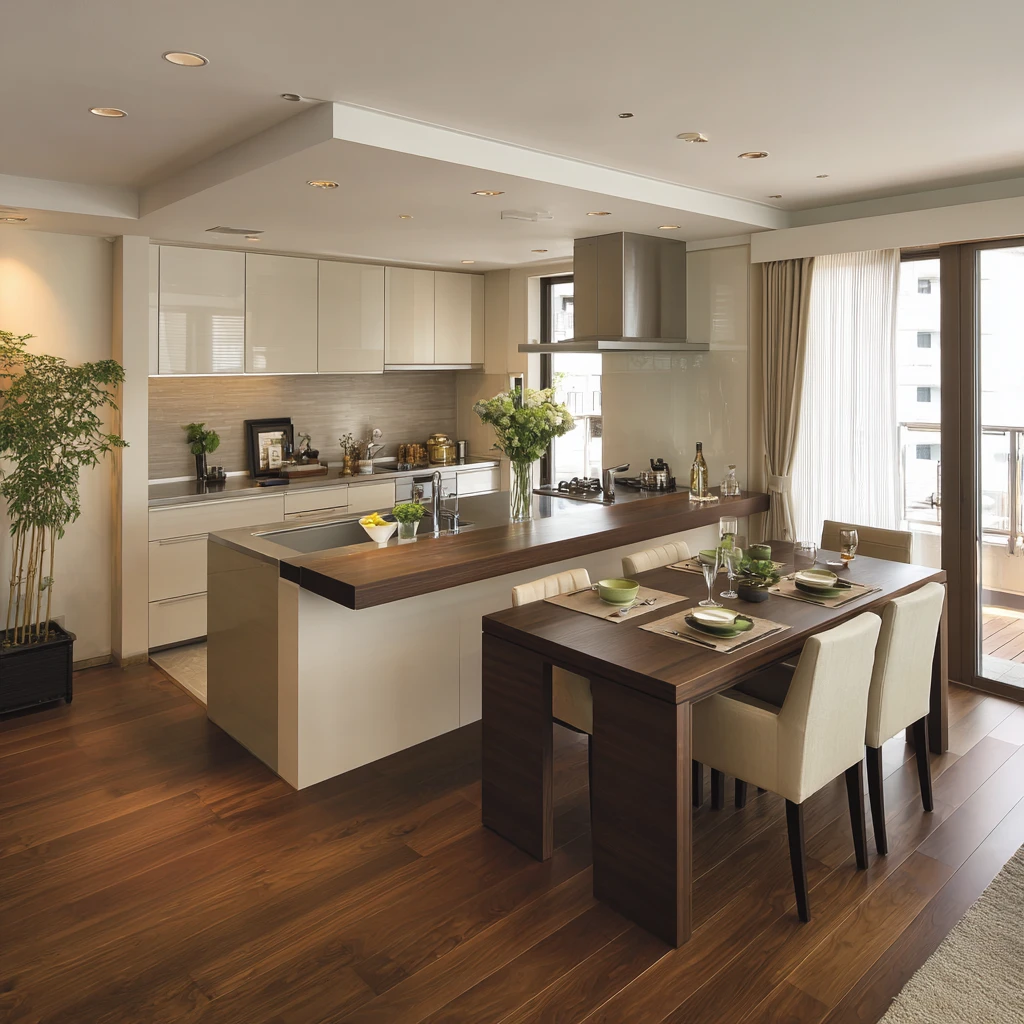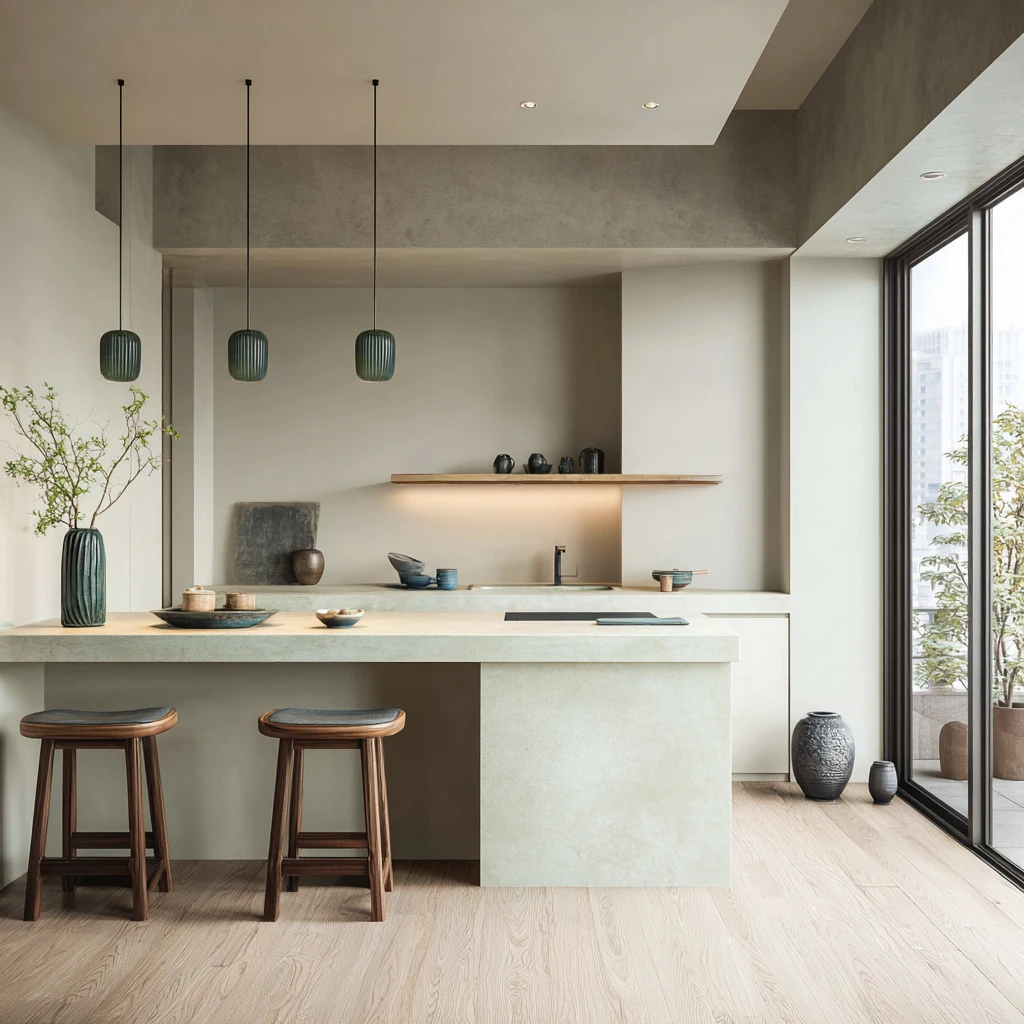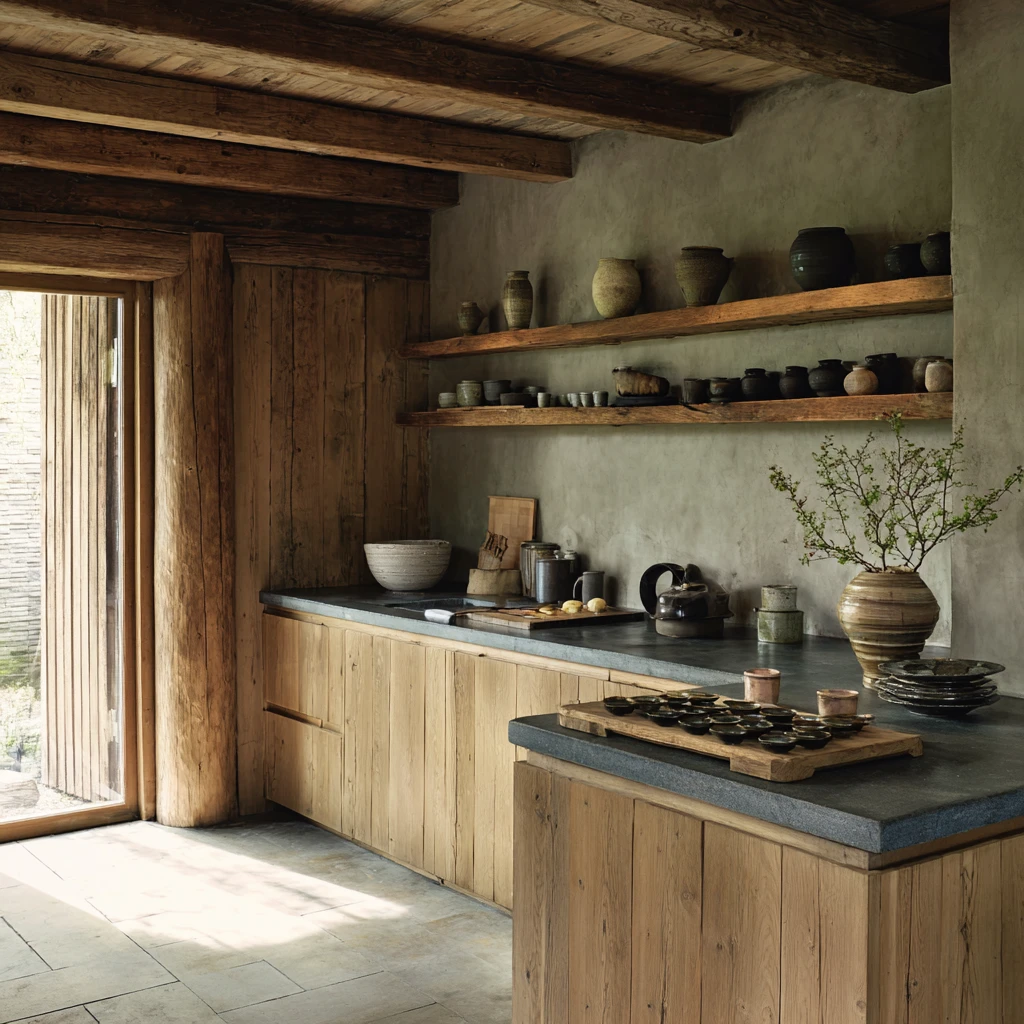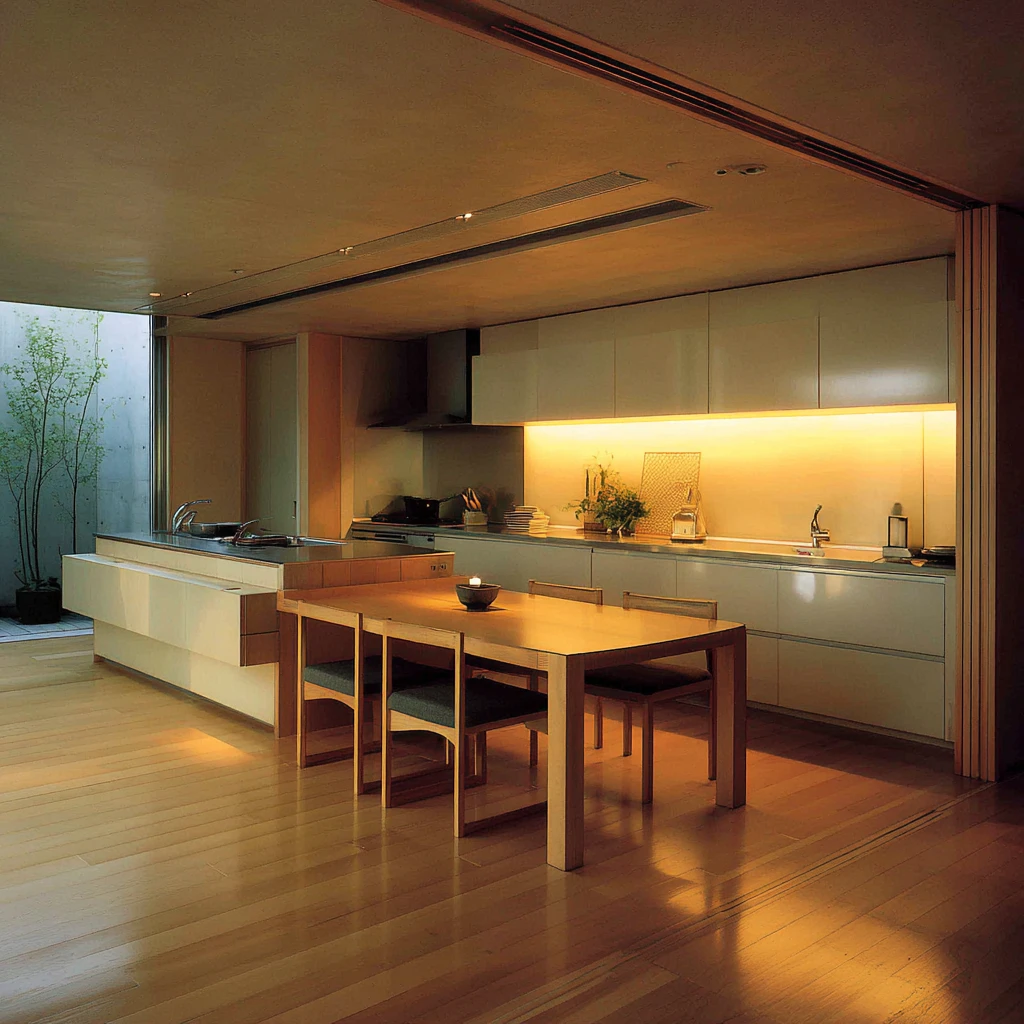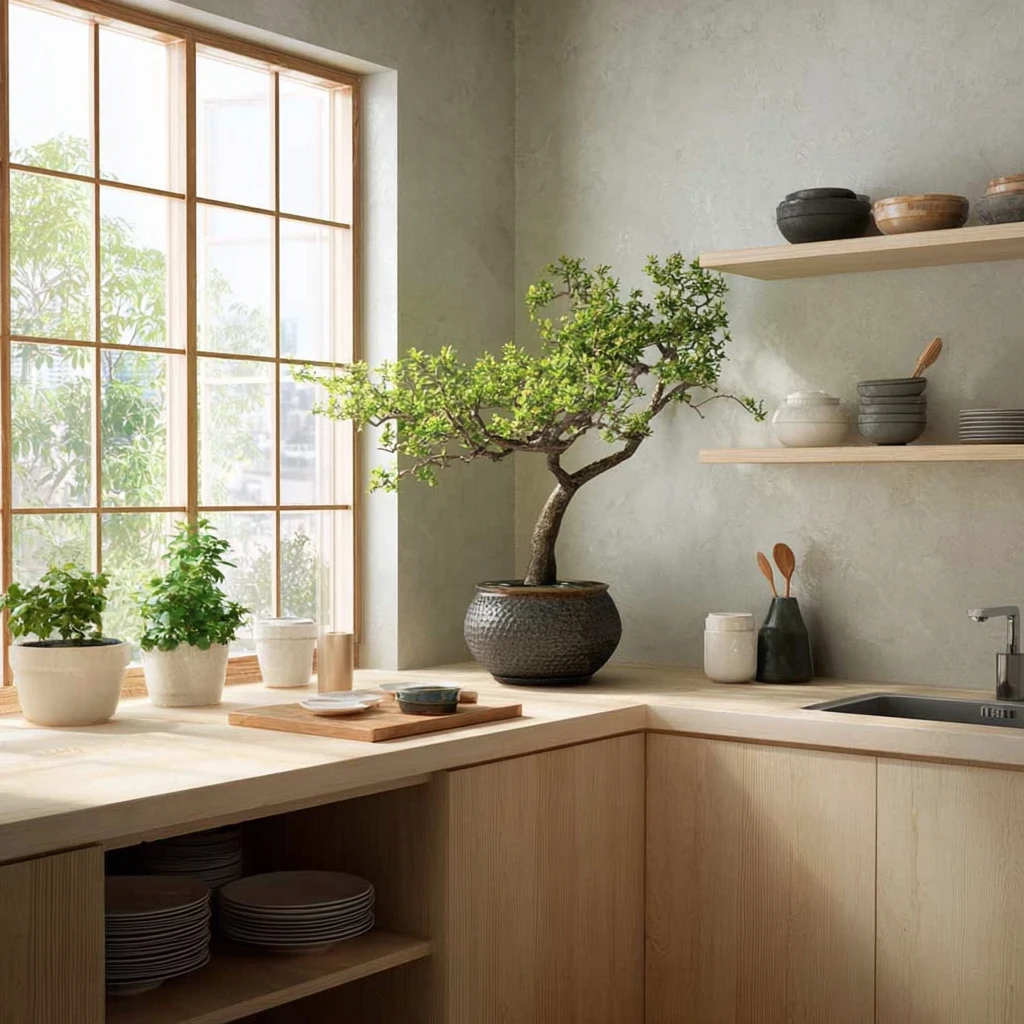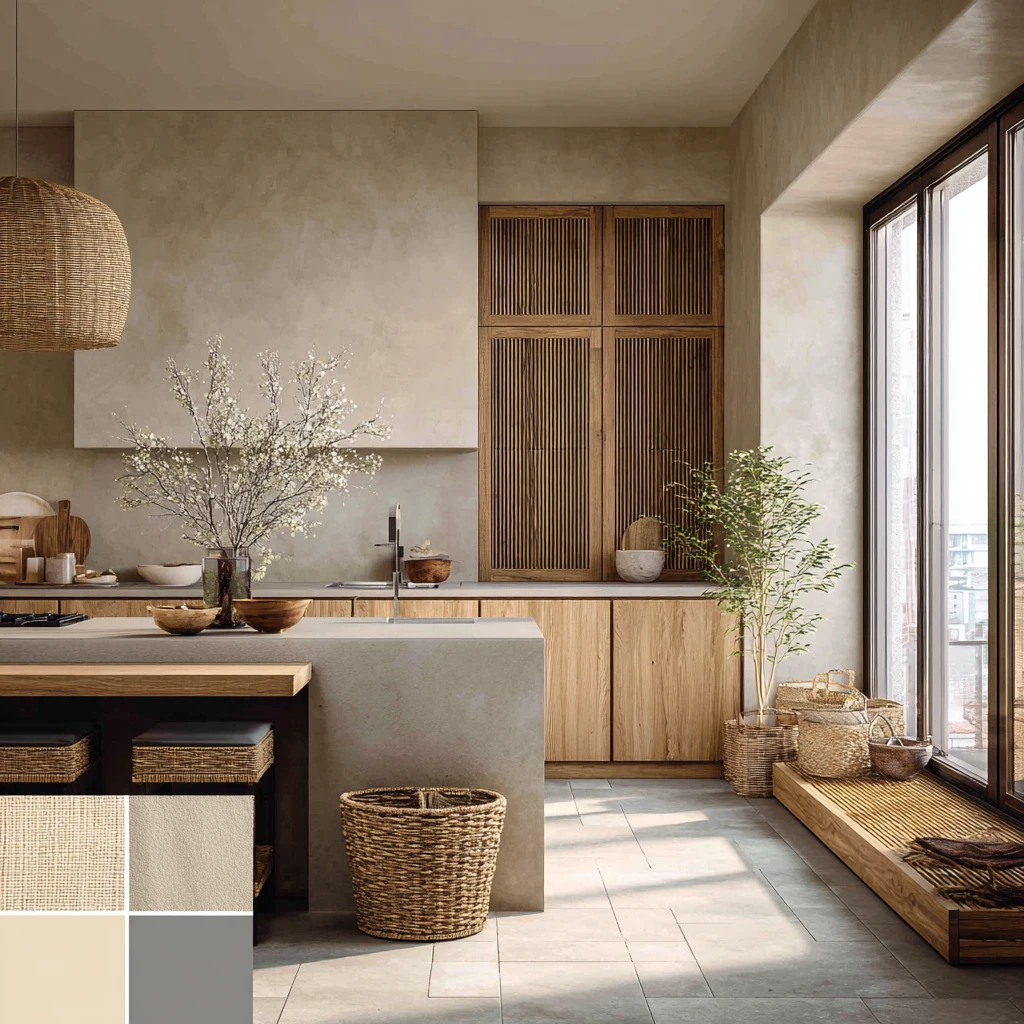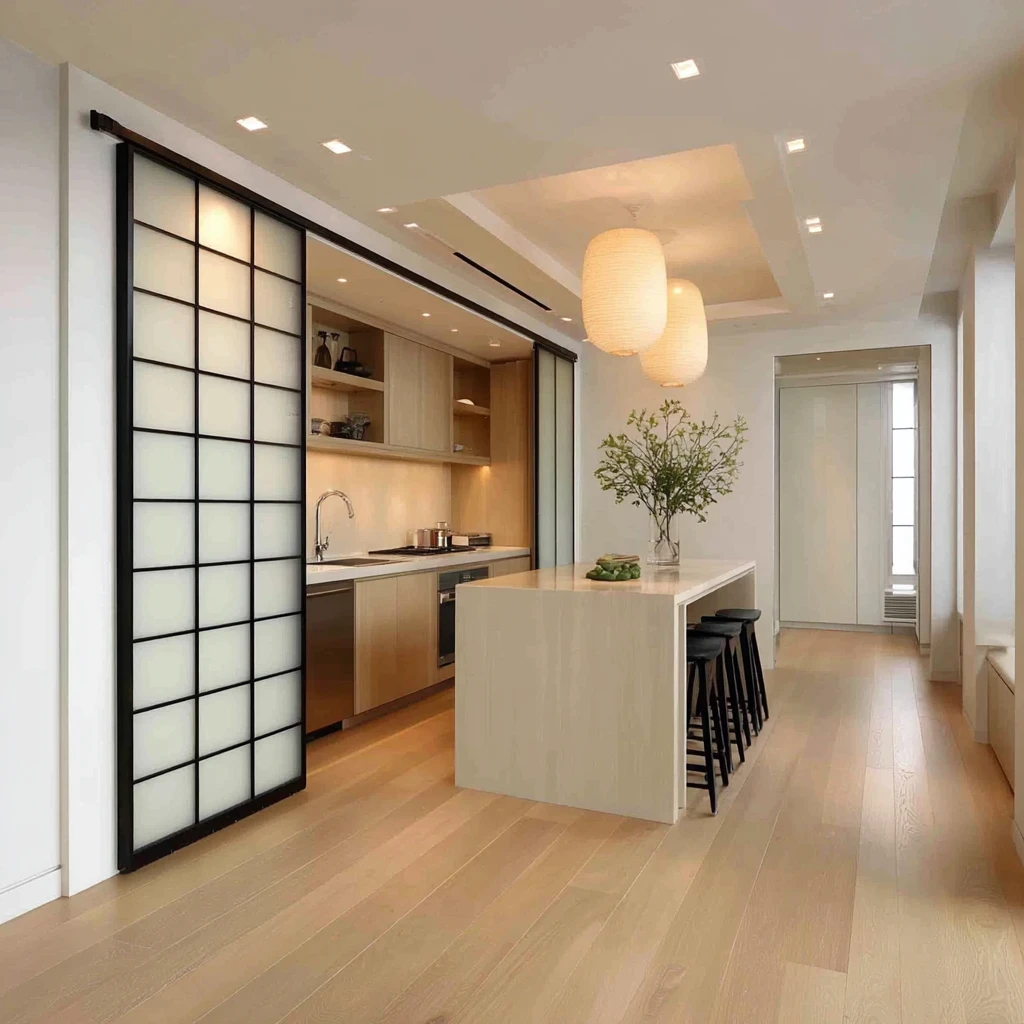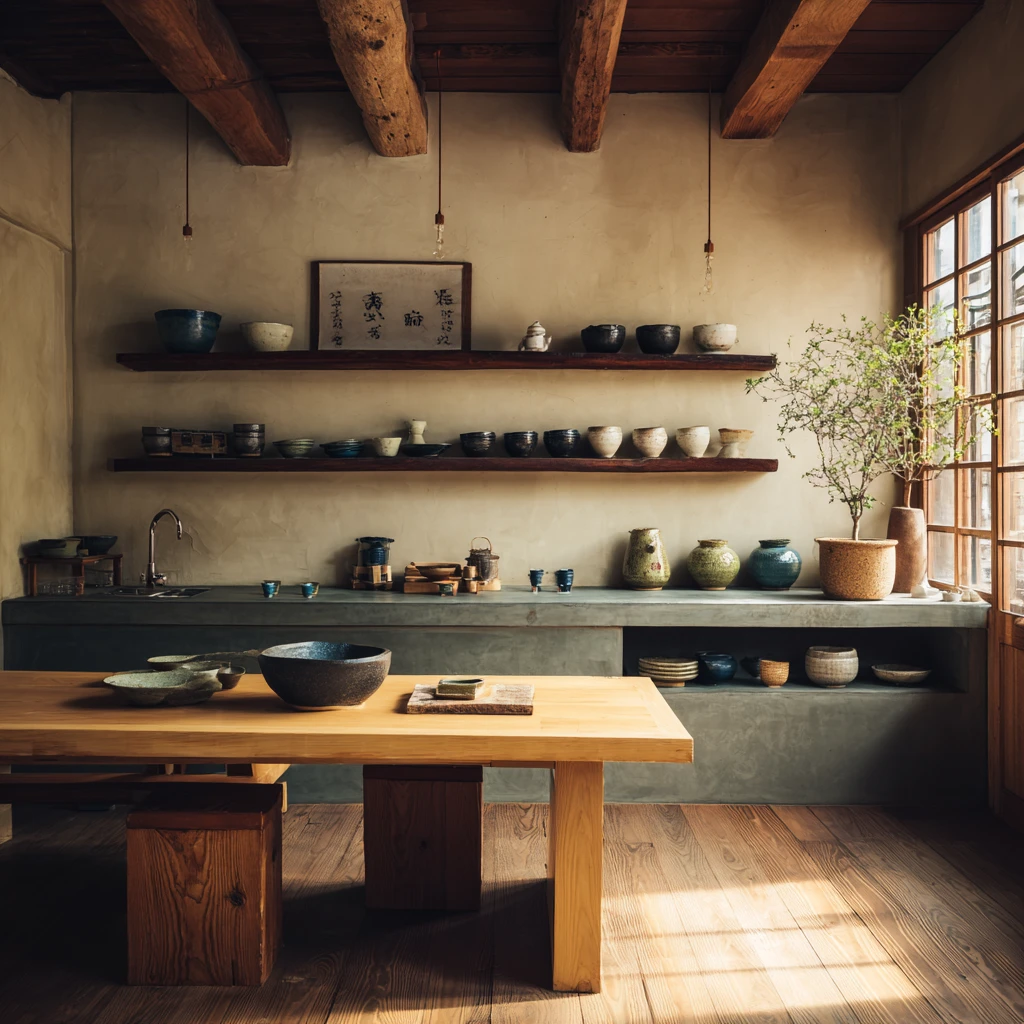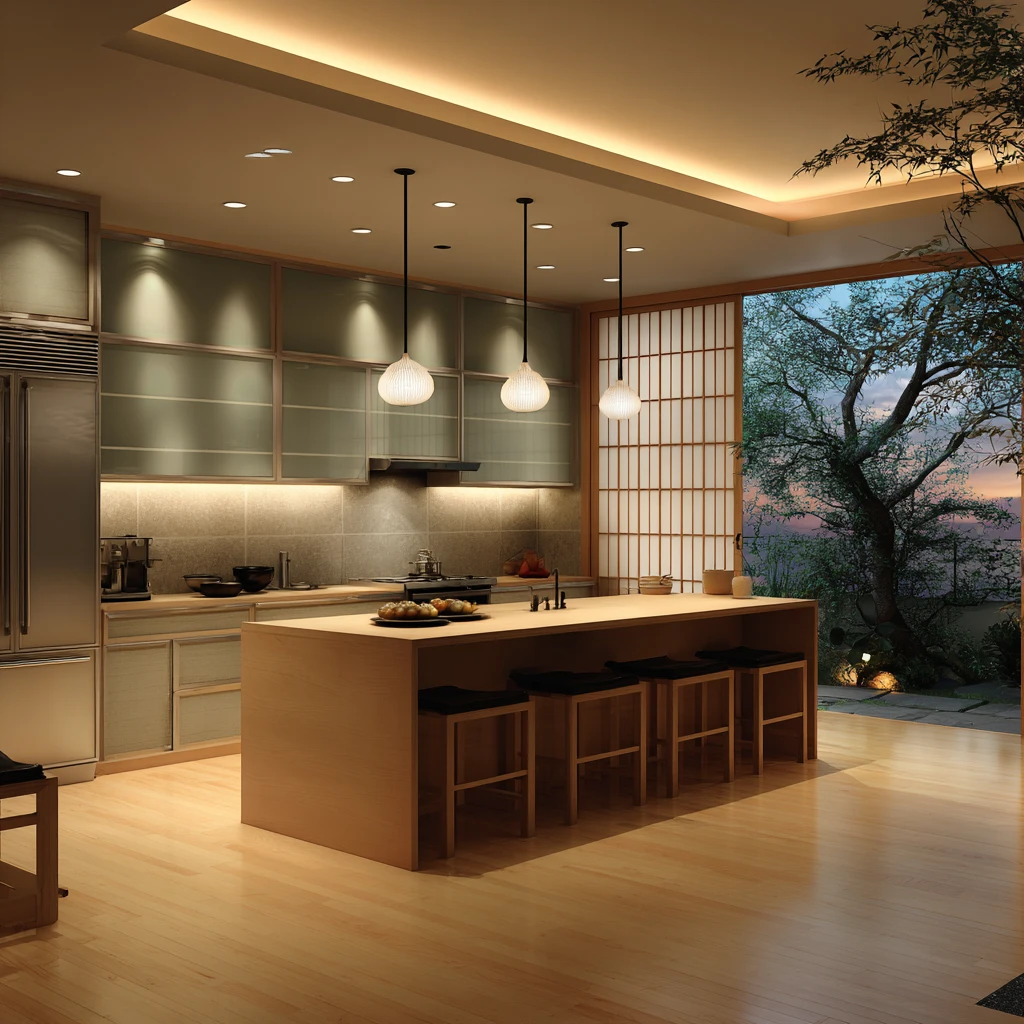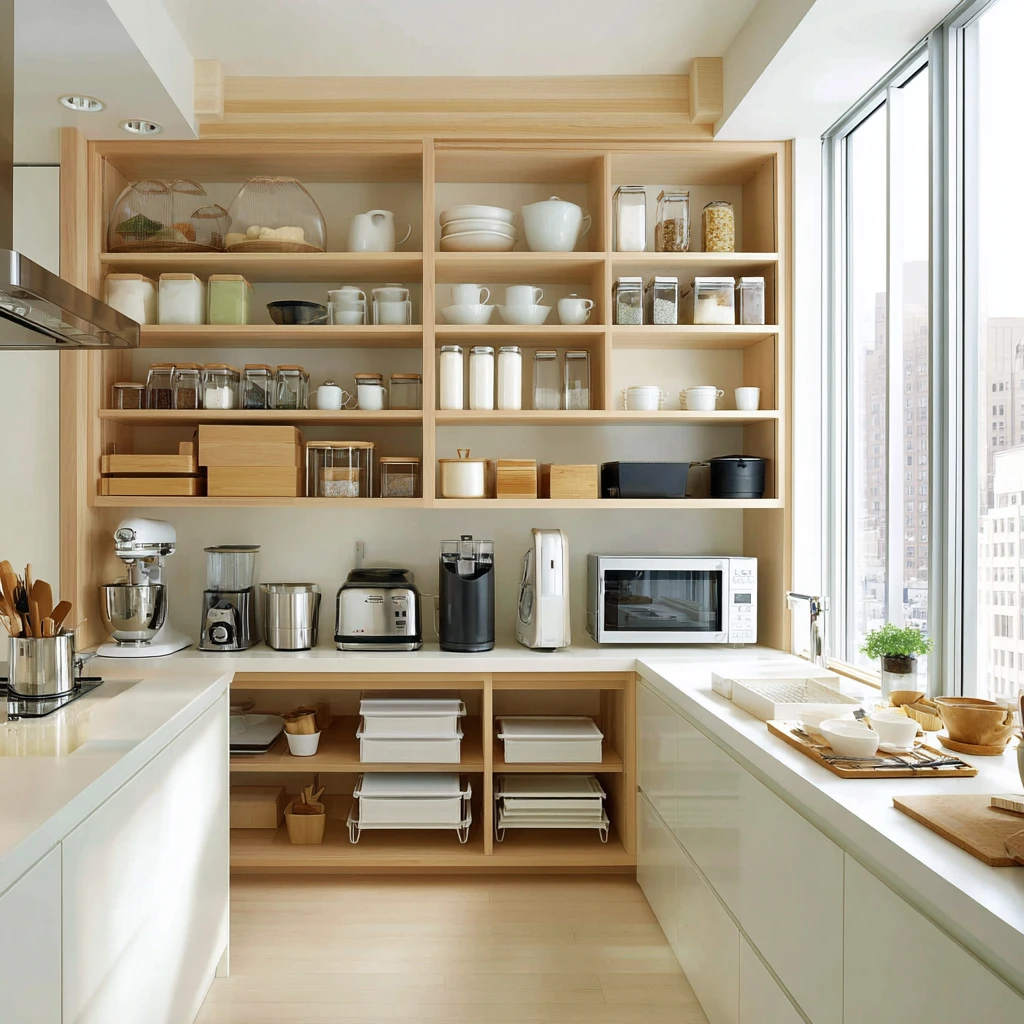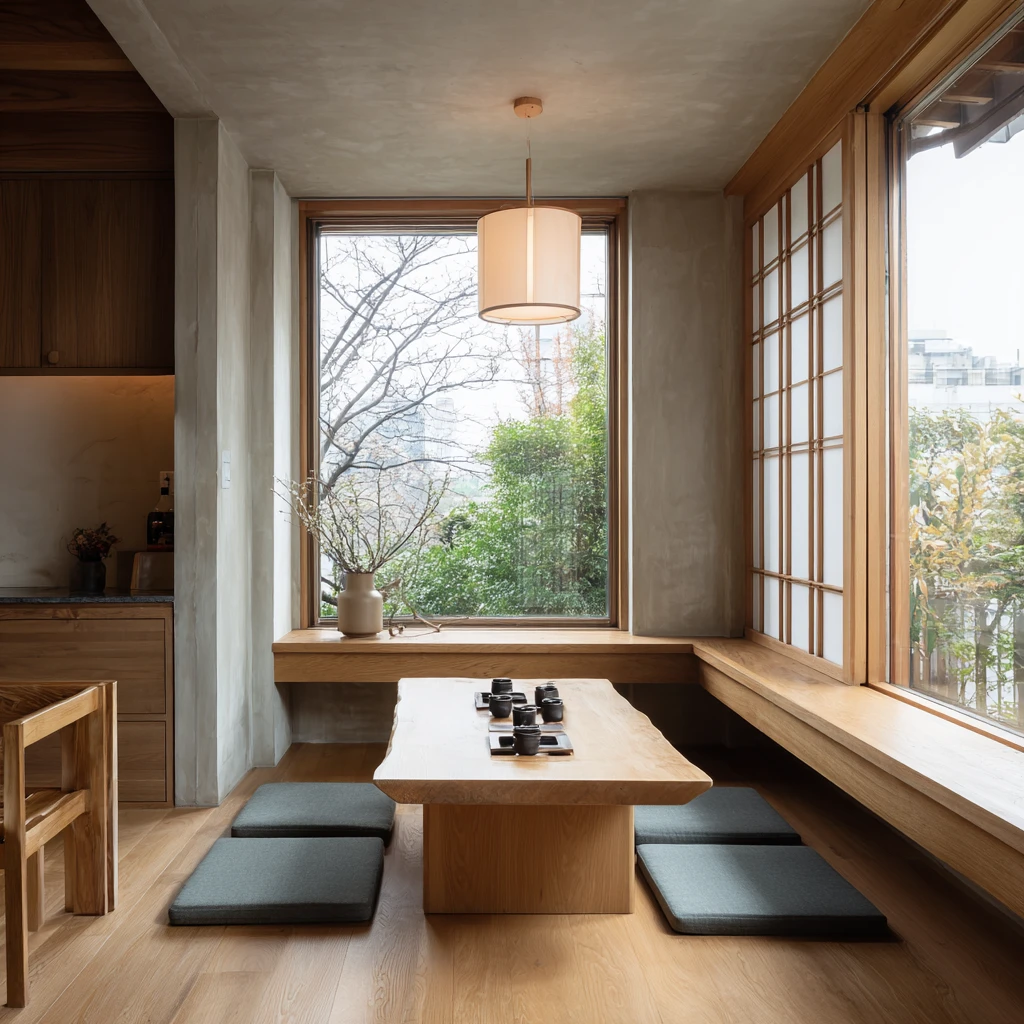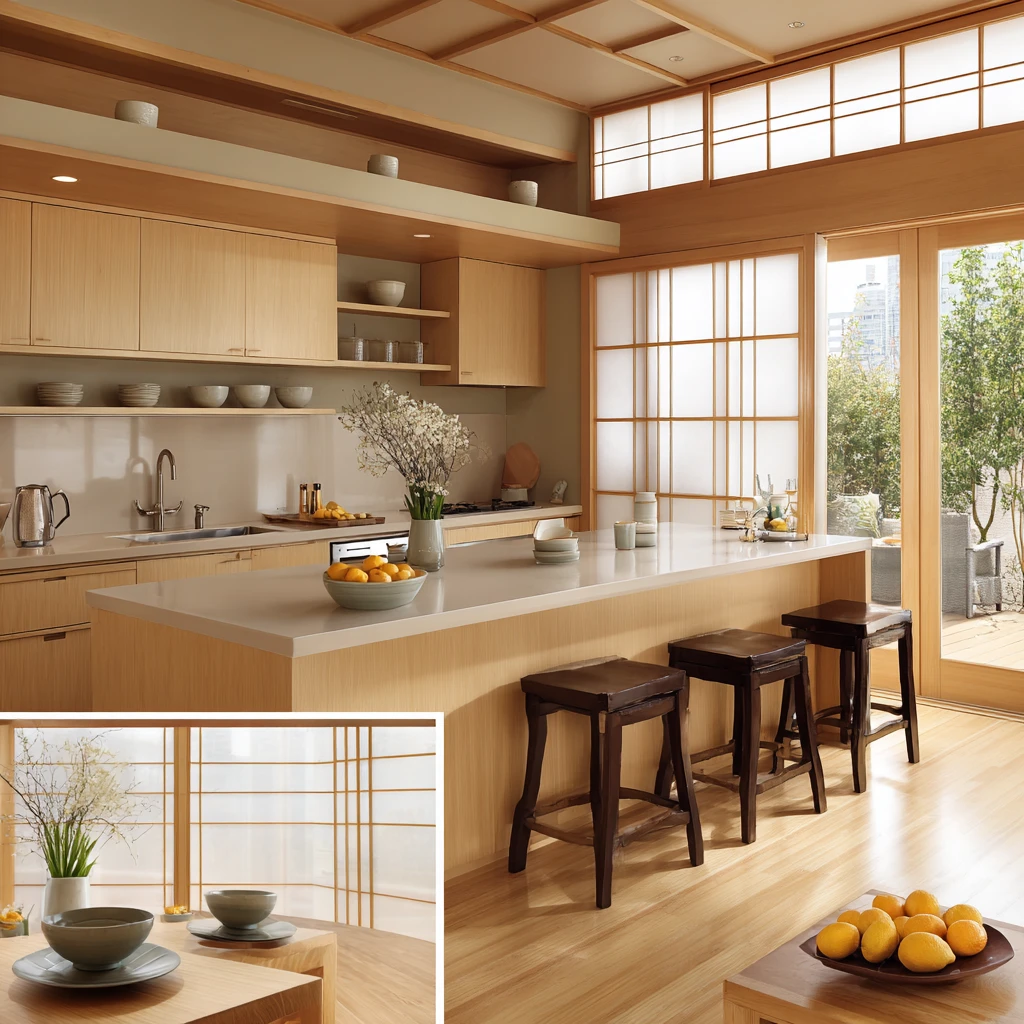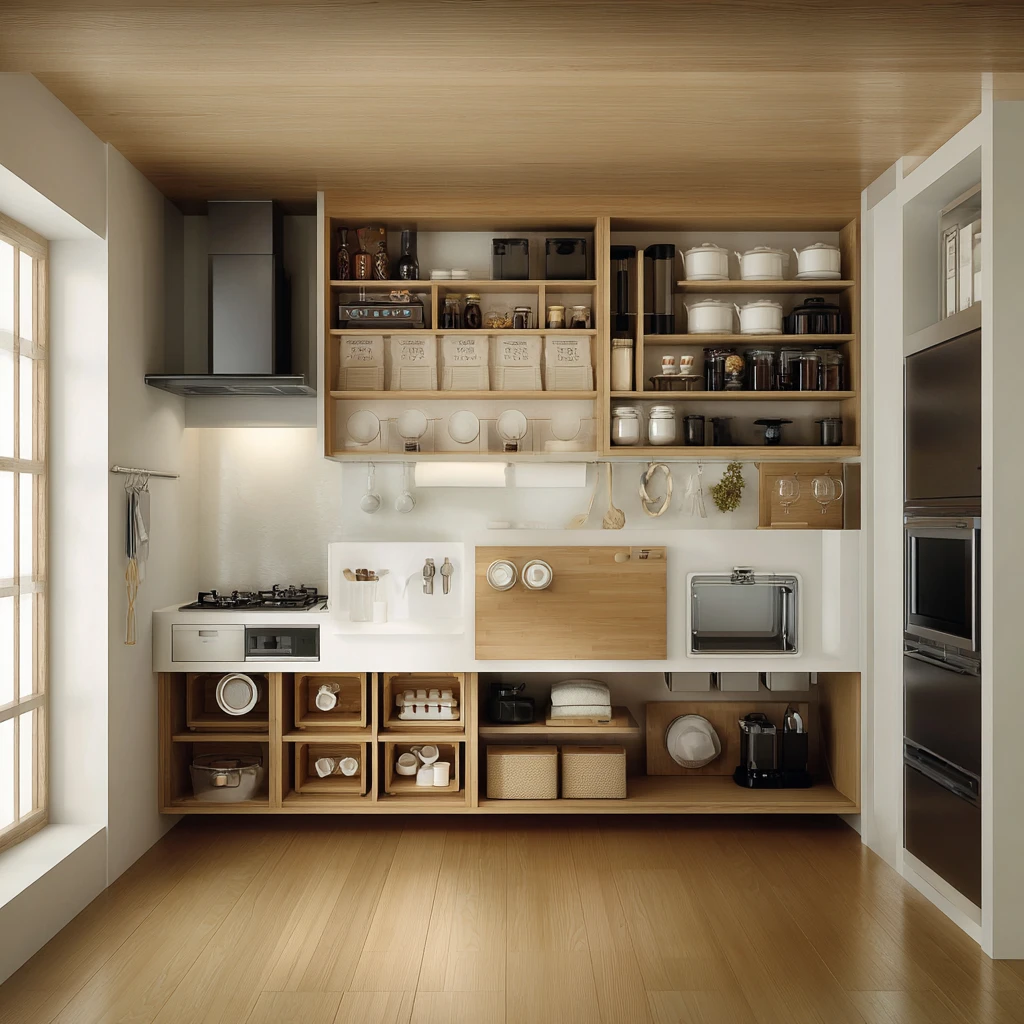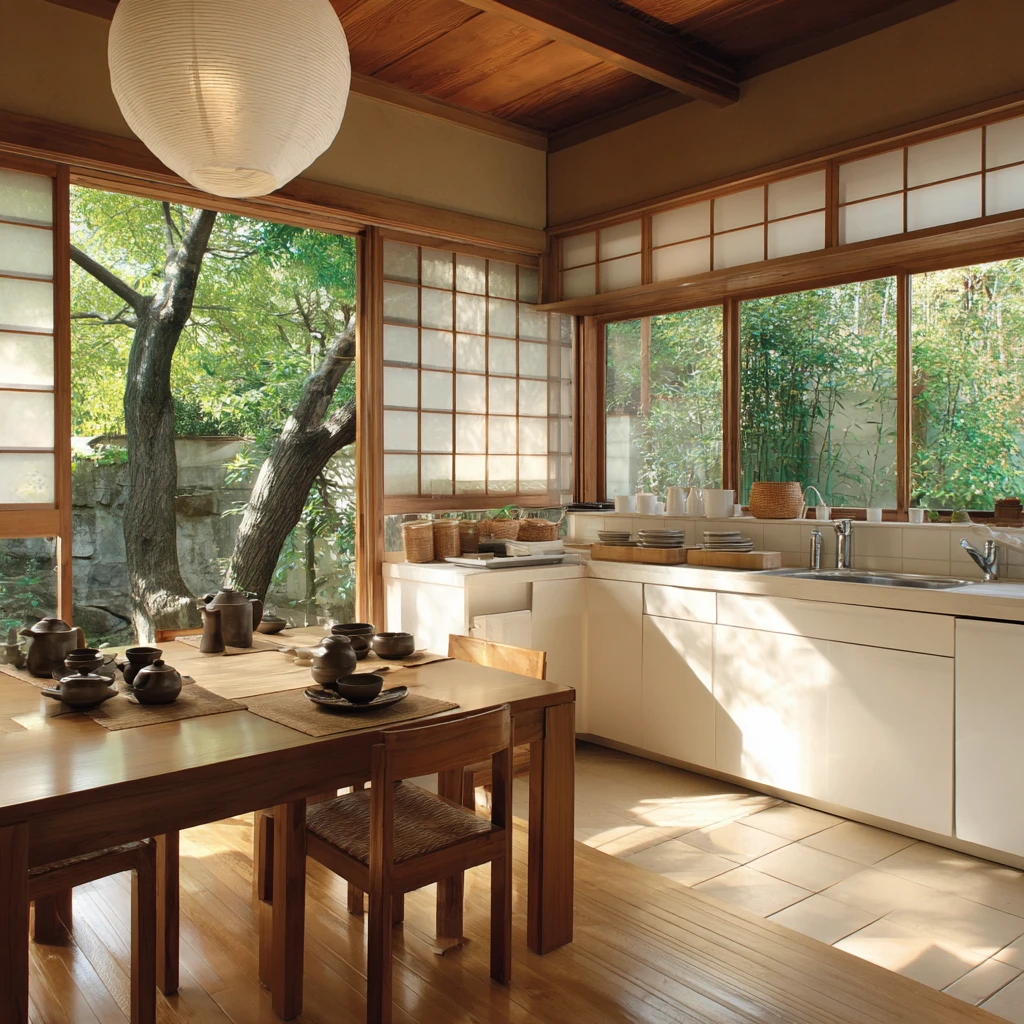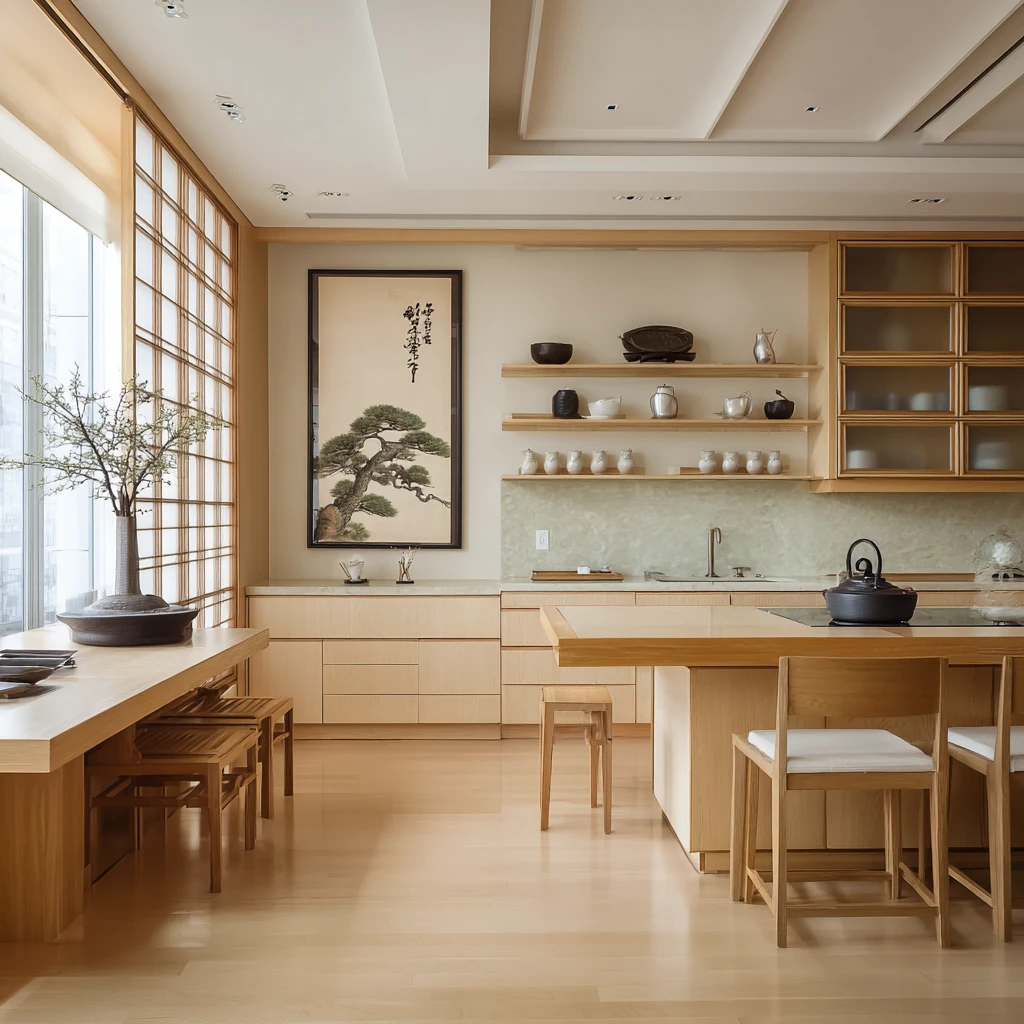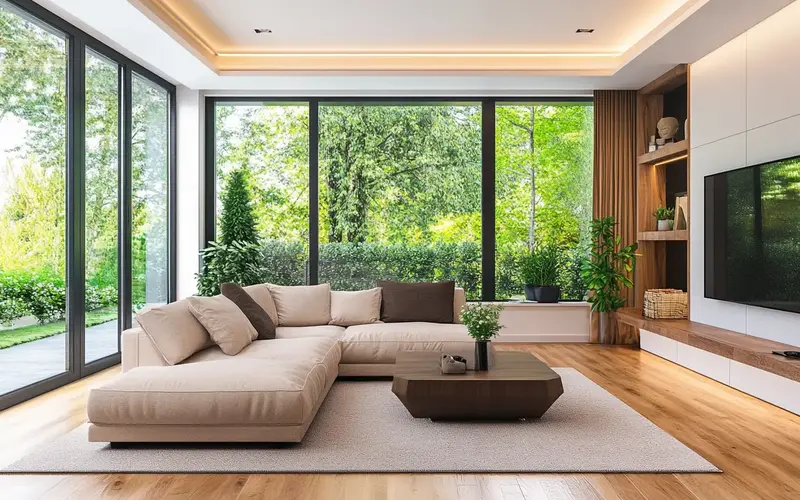Okay, let’s be real. Your kitchen should be more than just a place to cook; it should be a haven, right? Ever walk into a space and just feel instantly calmer? That’s the vibe we’re going for. Japanese design has this magical way of blending simplicity with total functionality, creating kitchens that are both beautiful and seriously practical. So, grab your matcha latte (or your regular coffee, no judgment!), and let’s explore some amazing Japanese kitchen ideas that might just inspire your next home refresh.
1. Embrace the Minimalist Mindset
Declutter is Key: Honestly, the first step to a Japanese-inspired kitchen is saying sayonara to the clutter. Think about it: those sleek, serene spaces you see? They’re not packed with random stuff. Everything has its place, and surfaces are transparent. It’s almost therapeutic, isn’t it?
Neutral Color Palette: Think calming hues like whites, creams, and natural wood tones. These colors create a peaceful backdrop and make the space feel larger and more open. It’s the visual equivalent of a deep breath.
Product Spotlight: Want to start decluttering those countertops? A set of sleek, stackable Joseph Joseph Nest 9 Plus Nesting Bowls with Measuring Cups can work wonders. And for keeping your pantry organized and visually appealing, consider clear OXO Good Grips POP Container Sets.
Read More: 21 Inexpensive Covered Outdoor Kitchen Ideas
2. Natural Materials are Your Best Friend
Wood, Glorious Wood: Wood is a cornerstone of Japanese design. Think natural wood cabinets, open shelving, or even wood-look tiles. It brings warmth and an organic feel to the space. It’s like getting a little bit of nature indoors.
Bamboo Accents: From utensils to blinds to even small storage containers, bamboo adds a touch of natural elegance and is super sustainable. Plus, it just looks cool, doesn’t it?
Product Spotlight: Introduce some natural wood tones with a beautiful Lipper International Acacia Wood Serving Tray. For a touch of bamboo, a set of Totally Bamboo 5-Piece Utensil Set is both practical and stylish.
Read More: 17 Beautiful White Oak Cabinet Kitchen Ideas
3. Streamlined Cabinetry and Storage
Handleless Design: Sleek, handleless cabinets contribute to a clean and uncluttered look. It’s all about smooth surfaces and a minimalist aesthetic. Ever notice how much visual noise handles can create?
Smart Storage Solutions: Maximize every inch with clever pull-out drawers, hidden compartments, and vertical storage options. In a smaller space, this is an absolute game-changer. Where did all that stuff go? Magic!
Product Spotlight: Optimize your cabinet space with a Lynk Professional Roll Out Under Sink Organizer. For those tricky corner cabinets, a Lazy Susan Turntable Organizer can make a world of difference.
Read More: 17 Ideas for Kitchen Cabinet Handles
4. Let There Be Natural Light
Maximize Windows: If you’re lucky enough to have windows, let that natural light flood in! Avoid heavy curtains; opt for sheer blinds or leave them bare to enhance the airy feel. Natural light just makes everything look better, doesn’t it?
Consider Skylights: If possible, a skylight can bring in even more daylight, transforming the entire atmosphere of your kitchen. Imagine cooking under the soft glow of the sun. Sounds pretty dreamy, right?
Product Spotlight: Enhance the natural light with strategically placed mirrors like the Umbra Hub Leaning Mirror. To subtly control the light, consider the simple Achim Home Furnishings Buffalo Check Tier and Swag Set in a light color.
Read More: Best Sage Green-Themed Kitchen Ideas
5. Incorporate Shoji Screens (Subtly)
Sliding Doors or Panels: While full shoji screens might not be practical for every kitchen, incorporating the concept with frosted glass sliding doors or panels can add a subtle Japanese touch and save space. Plus, they look pretty elegant.
Decorative Elements: Even small shoji-inspired elements, like cabinet door inserts or wall decor, can hint at the aesthetic without overwhelming the space. It’s all about those little details.
Product Spotlight: Bring in the shoji aesthetic with an Oriental Furniture Japanese Style Shoji Window Pane. For a more functional approach, consider ArgoByt Frosted Privacy Window Film.
Read More: 17 Kitchen Countertop Decor Ideas I’m Obsessed With
6. The Beauty of Open Shelving (Use it Wisely!)
Display Mindfully: Open shelving is great for showcasing your favorite ceramics or neatly arranged essentials. But remember the “minimalist” part – don’t overload them! Think curated, not cluttered.
Mix and Match: Combine open shelves with closed cabinets to balance visual interest and practicality. You can display the more attractive items and hide the less aesthetically pleasing ones. Smart, right?
Product Spotlight: Showcase your items on the stylish Greenco Set of 3 Floating U Shelves. Keep everything looking neat with matching mDesign Stackable Kitchen Storage Containers with Bamboo Lids.
Read More: 17 Brilliant Open Shelving Pantry Kitchen Ideas
7. Dedicated Spaces for Everything
Designated Zones: In a Japanese kitchen, you’ll often find clearly defined zones for prepping, cooking, and washing. This enhances efficiency and flow. Everything has its purpose.
Consider an Island (or Peninsula): If your space allows, an island or peninsula can serve as a multi-functional zone for food prep, casual dining, or even a small workspace. Talk about maximizing functionality!
Product Spotlight: Create a dedicated prep zone with a sturdy John Boos Block RA03 Maple Wood Edge Grain Reversible Cutting Board. For casual dining, consider comfortable Amazon Basics Round Wood Seat Counter-Height Stools.
Read More: 17 Ideas for Black Kitchen Sinks To Transform Your Kitchen
8. Subtle Pops of Color
Nature-Inspired Hues: While neutrals dominate, introducing subtle pops of color inspired by nature – like deep greens or earthy blues – can add visual interest without disrupting the calm. Think of it as adding a little spice to a serene dish.
Focus on Accents: Use these colors in your accessories, like tableware, textiles, or even a small piece of art. A little goes a long way.
Product Spotlight: Add a touch of color with a set of beautiful Stone Lain Coupe Dinnerware Set, Service for 4, Teal. A simple DII 100% Cotton Chambray Kitchen Dish Towels, Set of 5, Blue can also do the trick.
Read More: 21 Kitchen Remodel Ideas: Transform Your Cooking Space
9. Embrace Imperfection (Wabi-Sabi)
The Beauty of the Imperfect: Wabi-sabi is a Japanese philosophy that finds beauty in imperfection and transience. In your kitchen, this might mean appreciating the natural variations in wood grain or a slightly uneven handmade bowl. It’s about character, not perfection.
Authentic Materials: Opt for materials that will age gracefully and develop a patina over time. Think natural stone or unlacquered wood. They tell a story, don’t they?
Product Spotlight: Embrace the wabi-sabi aesthetic with hand-thrown ceramic pieces like the Jingdezhen Japanese Style Ceramic Tea Set. A rustic wooden Ironwood Gourmet Charleston End Grain Prep Station will develop character over time.
Read More: 21 Brilliant Lighting Ideas for Your Small Kitchen Island
10. Low-Profile Everything
Lower Countertops (Sometimes): Traditionally, Japanese kitchens sometimes feature slightly lower countertops. While you might not want to renovate entirely, consider the visual effect of keeping things low and streamlined.
Under-Cabinet Lighting: This provides task lighting without adding visual clutter. It’s functional and creates a subtle, ambient glow.
Product Spotlight: Achieve low-profile lighting with LEONLITE Linkable Under Cabinet LED Lighting. For a low-profile seating option, consider the Giantex 2pcs Floor Sofa Bed Adjustable Sleeper Lounge Couch.
Read More: 15 Stylish Wooden Dish Drying Rack for the Kitchen
11. Incorporate Greenery (Sparingly)
A Single Plant: A strategically placed bonsai tree or a small potted herb can bring life and a touch of nature to your kitchen. But remember, keep it minimal.
Consider a Mini Indoor Herb Garden: Fresh herbs are not only functional but also add a lovely visual element. Plus, they smell amazing!
Product Spotlight: Start with a low-maintenance Costa Farms Peace Lily Live Indoor Plant. For a small herb garden, the AeroGarden Sprout LED Indoor Garden with Gourmet Herb Seed Pod Kit is a great option.
Read More: How to Create a Serene Kitchen with Sage Green Cabinets?
12. The Importance of Texture
Mix Different Textures: Combine smooth surfaces (like countertops) with more textured elements (like woven baskets or natural fiber rugs) to add depth and visual interest. It keeps things from feeling flat.
Natural Fiber Textiles: Think linen or cotton for tea towels or small kitchen mats. They add a subtle tactile element.
Product Spotlight: Introduce texture with a DII Cotton Waffle Weave Kitchen Dish Towels, Set of 4, Natural. A small nuLOOM Tammara Jute Area Rug can add warmth and texture underfoot.
Read More: 17 Ultra Chic Rustic Kitchen Ideas You Can Try Right Now
13. Sliding Doors for Pantry or Storage
Space-Saving Solutions: If you have a pantry or a large storage area, consider using sliding doors instead of traditional hinged ones. They save space and contribute to the clean lines of Japanese design.
Frosted Glass Options: Frosted glass sliding doors can add a touch of elegance while concealing the contents within. It’s a win-win.
Product Spotlight: For a pantry door solution, explore options like the Vant Door Traditional Sliding Barn Door. Consider using Rabbitgoo Frosted Glass Window Film on existing doors for a similar effect.
Read More: 21 Beautiful Kitchen Islands That’ll Upgrade Your Look
14. A Touch of Tradition with Ceramics
Handmade Pottery: Incorporate handmade ceramic bowls, plates, or vases. Their unique imperfections add character. Remember wabi-sabi?
Tea Ceremony Influence: Even if you don’t have formal tea ceremonies, using beautiful teacups or a simple teapot can bring a touch of Japanese tradition to your daily routine.
Product Spotlight: Discover unique ceramic pieces, such as the YOLIFE Japanese Style Ceramic Serving Bowls. A classic Hario Chacha Kyusu Maru Tea Pot is both functional and elegant.
Read More: 17 Easy Kitchen Storage Ideas That Will Change Your Life
15. Smart Lighting Design
Layered Lighting: Combine ambient lighting (like overhead fixtures) with task lighting (under-cabinet lights) and accent lighting (like a small table lamp) to create a well-lit and versatile space—different lights for different moods.
Warm Light Tones: Opt for warm-toned light bulbs to create a cozy and inviting atmosphere. Harsh, cool lighting can feel sterile.
Product Spotlight: Consider a simple and elegant overhead fixture like the Globe Electric 60W Vintage Edison 1-Light Pendant. Add a warm glow with a Simple Designs Basic Metal Desk Lamp with Flexible Gooseneck.
Read More: 17 Kitchen Organization Ideas That Just Make Sense
16. Keep Countertops Clear (Seriously!)
Everything in its Place: The key to a serene Japanese kitchen is clear countertops. This means putting away appliances and utensils when they’re not in use. It might seem obvious, but it makes a huge difference.
Appliance Garages: If you have the space and budget, consider incorporating appliance garages to hide away larger items when not needed. Out of sight, out of mind, right?
Product Spotlight: Keep your frequently used utensils organized and off the counter with an OXO Good Grips Rotating Utensil Holder. A simple ** Seville Classics 2-Tier Sliding Basket Organizer Drawer** can help keep items tidy inside cabinets.
17. Small Dining Nook with Natural Elements
Compact Table and Seating: If space allows, create a small dining nook with a simple wooden table and comfortable, low-profile seating. Perfect for casual meals.
Natural Views (If Possible): Position your dining nook near a window to take advantage of natural light and any outdoor views. Eating with a view is always better, isn’t it?
Product Spotlight: Consider a compact Walker Edison Wren Small Space Dining Table. Pair it with the comfortable Christopher Knight Home Set of 2 Francie Fabric Dining Chairs.
18. Incorporate Natural Scents
Subtle Aromas: Instead of artificial air fresheners, use natural scents like simmering citrus peels, fresh herbs, or essential oil diffusers with calming scents like lavender or sandalwood. It’s all about creating a peaceful sensory experience.
Fresh Flowers (Occasionally): A single, simple flower arrangement can add a touch of natural beauty and a subtle fragrance. But again, keep it minimal.
Product Spotlight: Diffuse calming scents with an Art Naturals Essential Oil Diffuser. For a natural air freshener, consider a Mrs. Meyer’s Clean Day Scented Soy Candle, Lavender.
19. Focus on Functionality
Everything Within Reach: Design your kitchen so that frequently used items are easily accessible. This makes cooking and cleaning much more efficient. No one wants to go on a treasure hunt for a spatula.
Ergonomic Design: Consider the ergonomics of your workspace to ensure comfort and prevent strain. This might involve the height of your countertops or the placement of your appliances. Your back will thank you.
Product Spotlight: Keep your knives safely and conveniently within reach with a Wüsthof Knife Block, 7 Slot, Acacia. Make often-used spices accessible with a Kamenstein Revolving 16-Jar Spice Rack.
20. Simple Window Treatments
Sheer Curtains or Blinds: For privacy, consider light and airy options like sheer curtains or simple blinds. They allow natural light to filter through while still providing some seclusion.
Natural Materials: Choose window treatments made from natural materials like linen or bamboo to complement the overall aesthetic.
Product Spotlight: Opt for light-filtering Amazon Basics Room Darkening Blackout Window Blinds. Natural woven Chicology Cordless Bamboo Roman Shades offer both style and privacy.
21. A Touch of Japanese Art or Decor
Minimalist Art: Hang a single piece of minimalist Japanese-inspired art or calligraphy. Don’t overcrowd the walls. Quality over quantity, always.
Small Decorative Objects: A carefully chosen ceramic figurine or a small stone lantern can add a subtle nod to Japanese culture without being overwhelming.
Product Spotlight: Find minimalist Japanese art prints. A small Top Collection Miniature Japanese Zen Garden Kit can add a calming decorative touch.
Final Thoughts
So, there you have it! Twenty-one ideas to bring a little Zen and Japanese-inspired design into your kitchen. Remember, it’s not about perfectly replicating a traditional Japanese kitchen (unless that’s your goal!), but rather about incorporating elements that promote simplicity, functionality, and a sense of calm.
Pick and choose the ideas that resonate with you and your space. You might be surprised at how a few thoughtful changes can transform your kitchen into a delightful space to be in. Now, go ahead and create your little kitchen sanctuary!
